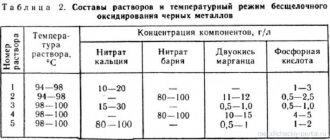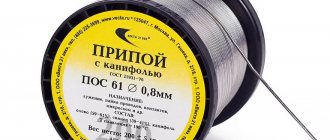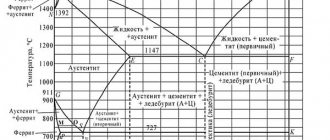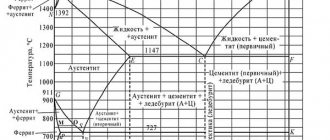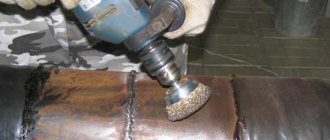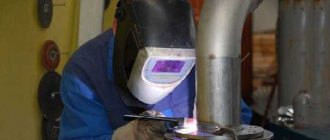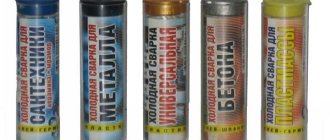Technical professions remain among the most in demand. Moreover, everyone is needed - engineers, computer scientists who can set up complex equipment, and those who do the work themselves. Moreover, the latter often not only perform difficult tasks, but also find themselves in dangerous conditions. This, for example, characterizes the profession of a welder. Its features, advantages, and disadvantages will be discussed further.
Who is a welder and what does he do?
Many people understand what welding is. This is a method of joining metal objects to each other using special welding equipment. The metals are heated to the point that they can be fastened together, and then, after cooling the seam, a solid part can be obtained.
A welder is a person who has sufficient skills to do welding. You can weld most metal parts, structures, pipes, various containers, etc.
The welder is required to have knowledge of metals, their properties, skills in working with special equipment, and the ability to use this equipment in different conditions, since the seams are different and therefore require different processing.
The work of a welder requires physical strength, patience, the ability to concentrate in any conditions and solve problems, complete precision of movements, and sometimes even ingenuity. And it’s better to make mistakes here as little as possible, since poor welding can ruin the entire structure, and fixing everything is not easy. Therefore, the responsibility is very great.
The profession code consists of several parts. The first 5 numbers are the OKPDTR code, after which the check digit is noted, then the codes according to ETKS, OKZ. Next - the code according to the tariff schedule, category, form of remuneration, codes to indicate the danger of work, as well as their mechanization. There are 18 numbers in total in the code.
Preparing the elements to be welded
Before starting welding, the joints between parts must be cleaned of dirt and rust and moisture removed. If the thickness of the part is more than 3 mm, then it is better to chamfer the edges; this will allow for better welding of the elements, which is important, especially for a beginner. We recommend that you do not skimp on time and prepare the parts to be welded well.
Pros and cons of the profession
Among the advantages of the profession is its high demand. The market always needs welders; they are often in short supply; the higher the qualifications, the higher the demand. Moreover, you can find a job even without experience.
If you earn a good rank, your wages will be high, and you will also have the opportunity to receive various pension benefits due to harmful working conditions.
This is the main disadvantage - dangerous working conditions. Regular welding can lead to irreparable health consequences, for example, deterioration of hearing and vision. It is also constant physical labor, which is why the body constantly receives a heavy load, which means it requires regular, quality rest.
Categories of welders
Depending on what objects the master works with, as well as what equipment he uses, several types of welders can be distinguished:
- Welder of refractory metals.
- Thermite welding specialist.
- Welder of reinforcement products.
- Specialist in furnace pipe welding.
- HDTV welder.
- Press welding operator, etc.
Each of these subtypes has a code in the OKPDTR classifier of professions, positions and categories.
DIY inverter welding
Of course, a beginner does not need to buy any complex and professional equipment; for country needs, it is quite enough to buy an inexpensive welding inverter, with which you can perform the most common type of welding - manual electric arc (MMA). This type is used for welding parts made of carbon structural steel. For do-it-yourself inverter welding, coated piece electrodes are used.
Qualification categories
Each welder can receive 6 categories. Each of them is obtained sequentially; you cannot miss a single one. The first category is received by all graduates of the relevant educational institutions, after final exams.
When a welder proves that he can weld in low and vertical positions, he can receive a second rank.
If you have additionally studied pipe sealing, have the skills to use simple drawings, have a complete understanding of safety precautions, and the operating principle of basic welding tools, you can count on the third category.
When a specialist can easily weld in any position (except for the ceiling), can handle special types of pipes, confidently uses drawings and is allowed to work with objects of medium complexity - this will be useful for the fourth category.
Required knowledge and professional skills
In addition to the ability to operate welding equipment, which can be improved endlessly, the welder must also know about:
- Features of metal melting.
- Deposition of metals, soldering methods.
- Seam defects, their types, methods of prevention and correction.
- Methods for cleaning seams.
- The equipment he will have to use in his work. Its principles of operation, methods of adjustment and repair.
- Gases, their participation in antioxidants, properties. Solid theoretical knowledge in electrical engineering, physics and chemistry is welcome.
Also, every welding specialist must know exactly the safety precautions and first aid rules. And in addition, be able to calculate the timing of work, estimating the volumes in advance.
Solid theoretical knowledge greatly helps during practical work.
Medical restrictions
There are almost no contraindications to becoming a welder. But if a person has hearing, vision, musculoskeletal disorders, or some mental abnormalities that may prevent him from working with equipment, unfortunately, the path to the profession will be closed.
Also, welding is usually not taught to people with hypertension, respiratory diseases (even bronchitis), as well as claustrophobia and acrophobia. Welding work can be carried out in different conditions, so fear of confined spaces or heights can interfere with concentration, and therefore the completion of the task.
Since not only men, but also women can be welders, their medical contraindications are even stricter.
Types of jobs
Proper organization of the welder's workplace is the key to quality welding and high productivity. There are stationary and non-stationary welding workplaces. At stationary welding places, welding work is usually carried out on small parts that are easily placed on the table.
Permanent places are intended for the production of welders in industrial enterprises: in workshops, workshops. A stationary workplace can be single-station (which implies the presence of a workplace for only one welder), which is powered by a transformer, as well as multi-station, in which there are several cabins in the room, powered by a single current source.
Parts can be supplied by mechanics or other workers, and the welder himself is mainly located in the cabin. The welding transformer in this case should be located in a separate room.
A general or individual panel must include measuring instruments, various protective equipment, signal lamps and switches, clamps, etc. For an individual place, a separate panel with measuring instruments is provided.
Temporary mobile workstations are used to perform work on equipment and installations that are not allowed to be moved to the post. A mobile or non-stationary welding place usually involves welding large-sized products that lie motionless. In this case, the welder has to move around the perimeter. When preparing a mobile location, you need to create conditions in which nothing would interfere with the process.
When using a transformer for a mobile non-stationary location, it can be located inside the building or outside.
When performing welding work outdoors, the workplace must be protected from the atmosphere. For these purposes, tents, portable awnings or awnings, etc. can be used.
Occupational diseases
The main disadvantage is the occupational diseases of welders. First of all, the eyes and respiratory organs will receive serious stress. Welding gas and dust can affect a person even when he is properly equipped with safety precautions. There is a risk of developing intoxication of the body, eczema, kidney disease, liver disease, tumor diseases (with very heavy and frequent load). Hearing impairment is also common among welding professionals.
Additionally, there is always a danger of getting an electric shock, burns to the skin, eyes, respiratory organs and other work-related injuries.
Therefore, welders are entitled to benefits, additional vacation days depending on the complexity of the work, regular medical examinations, proper nutrition (milk is also taken into account here for its harmfulness), as well as the possibility of sanatorium-resort treatment.
The welding profession is associated with risks and diseases
Ignition of the arc with an electrode
After the consumable is installed in the holder and the appropriate current strength is selected, you should start igniting the arc. This can be done in two ways: touching or swiping.
In the first option, the arc is ignited after the rod touches the workpiece. There will be no difficulties with the second one either. You just need to scratch the electrode on the metal surface. However, this method will not be able to ignite an arc in hard-to-reach places.
How to become a welder
Like any other profession, to become a welder, you need to undergo a lot of training, which for the most part will consist of practice. First, they receive theoretical knowledge at a vocational school or college. If you come after 9th grade, you will have to study for at least three years, and after finishing 11 years, two is enough. To enroll, you do not need to take any special subjects. You can have a certificate with a minimum score and basic exams to easily get admitted. But you need to be prepared that you will still have to study mathematics, physics and chemistry. After completing training, the welder immediately receives the first rank, which will help him get a job and begin to gain experience and learn new things. Those who are especially successful in their studies may be given a second or third category in college.
The more varied tasks a welder performs, and the more skillful he becomes, the greater the chance of successfully passing the exam and then receiving a new rank. At the same time, you can receive higher education in a field related to welding in order to become a valuable employee and gain career growth.
Is it possible to work for yourself?
Can.
This can be organized as a part-time job (if you work as a welder in some company and want to earn money after a shift or on weekends). How you can earn extra money:
- make some simple products to order (for example, pipe stoves);
- weld simple structures: fences, gates, tables for cottages or garages, racks, benches, canopies;
- engage in artistic welding: create and sell jewelry, souvenirs, interior or exterior items (example);
- weld reinforcement when arranging the foundation or during monolithic construction;
- find small (or medium-sized) companies that periodically need a welder, but not so often as to keep him on staff (for example, construction and repair teams, companies for the installation and maintenance of utilities, for the production of garden furniture);
- cook and repair products for cars, agricultural machinery, special equipment, and do body repairs.
If you already have experience (you know how, what and with what to cook correctly), you can try working for yourself. But this is relevant mainly for large cities - in small towns, orders may not be enough for a normal income.
Income level and career growth
The most common myths about the electric welding profession are that the wages are too low and there is no professional growth at all. Neither one nor the other is true.
Everything will depend on the length of service, as well as experience. The more experience a welder has, the more experience, which means higher wages. In addition, you can pass qualifying exams and receive ranks, which will also have a positive impact on your salary. The difference between the incomes of welders with “neighboring” categories is on average 15 thousand rubles. At the same time, the fourth category allows you to count on an average of 40 thousand rubles, and the fifth - already 50 thousand or more.
A good welder will always have a decent income level!
Career growth is ensured by improving professional skills and knowledge. The more you work, the more difficult tasks you set for yourself, the greater the likelihood of getting a new rank. And the higher it is, the more opportunities there are to get a highly paid position. The market always needs good specialists.
Where to work?
Options:
- Employment after training (some vocational schools and training centers provide it). They usually find employment in enterprises in their own city. If the city is large, then firms often cooperate with training centers and vocational schools. Just when enrolling in courses, be sure to check whether this is possible.
- Shift method. Shifts are recruited either by recruitment agencies (there are more than one in large cities), or by large organizations directly (but they often delegate this task to recruitment agencies), or by foremen. If newbies are hired for a shift immediately after the course, it will be somewhere in an uncomplicated position - you shouldn’t expect that after 3 months of evening training you will go to the North to weld rigs for Gazprom for 100-120 thousand rubles.
- Search through message boards. If there are no such advertisements in your city, it’s worth looking in the nearest large ones, or in Moscow or St. Petersburg.
- Work abroad. You can also search through message boards, only foreign ones. Now for many nearby countries there are separate ones where they are looking for visitors, including Russians. True, after the course it is unlikely that you will be able to immediately go to Germany.
- Employment through the labor exchange. As an option, you can go to the stock exchange immediately after completing the courses. If there are no suitable vacancies there, you can register to receive benefits and continue to look for work.
How many days vacation
Each welder can count on an annual leave of 24 working days. But there is an opportunity to get more - everything will depend on the certification of the welder and the place of his work, or rather the danger of the production in which he works.
The amount of additional leave is calculated on the basis of lists of industries, professions, positions and indicators that give the right to preferential pension provision. There are two of these lists, each of them contains a list of professions and categories by which they are divided into groups. Welders are found there several times, and in both lists, they simply have clarifications. For example, in the second list there are electric welders who perform manual welding, and in the first there are electric and gas welders engaged in underground construction.
If your position is in Schedule 1, you can expect an additional 2-4 weeks on top of the 24 days already provided. List 2 will allow you to stay on vacation for only 6–12 days.
Welder's pension
Since the work of an electric welder often takes place in dangerous conditions, people in this profession have the opportunity to retire early.
If a male welder has a work experience of 25 years or more, and of these he worked as a welder for 12.5 years, then he can retire at the age of 55. Women are required to have 20 years of work experience and at least 10 years of experience as a welder. Then they retire at 50 years old.
A prerequisite for early retirement will be official employment, regular contributions to the Pension Fund and a confirmed harmfulness of the workplace. But the rank will not matter.
If the production hazard class is not lower than third, gas welders, cutters, electric welders and electric gas welders can count on a preferential pension.
The work of a welder is difficult and dangerous, but it also pays well and has obvious benefits to society. Many structures simply could not be created without welders, since technological progress is still too far from eliminating the need for people to work with their hands. Therefore, this profession will remain in demand for a long time. And the emergence of new welding equipment, alloys and unusual structures requiring welding will guarantee the need for constant professional growth, as well as improving skills.
Welding curtains
Certification of a welder's workplace requires him to have an overlap, especially for multi-station areas. These overlaps are called welding curtains. They are made from fire-resistant fabric, which is the same as that from which workwear is made.
Curtains completely isolate the welder's workplace from strangers in order to eliminate the negative influence of the welding arc and other negative factors.
Welding curtains have the following functionality:
- They protect against ultraviolet radiation.
- Minimize the risk of fire as they provide protection from sparks and splashes.
- Prevents the negative impact of air currents on the welding zone.
- Increases the efficiency of exhaust equipment.
Approximate cost of welding curtains on Yandex.market
They are quite economical and easy to install. Curtains can be solid or striped. Solid curtains are made from a single fabric. They are made of PVC, stitched on all sides and have reinforced holes for hanging rings with a distance of 20 cm. The strip welding curtain is a separate strip with a width of 50 cm. The assembled width of the curtain is 140 cm.

